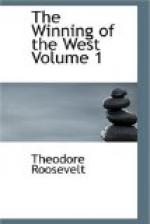It was quite otherwise in the countries conquered by Cortes, Pizarro, and their successors. Instead of killing or driving off the natives as the English did, the Spaniards simply sat down in the midst of a much more numerous aboriginal population. The process by which Central and South America became Spanish bore very close resemblance to the process by which the lands of southeastern Europe were turned into Romance-speaking countries. The bulk of the original inhabitants remained unchanged in each case. There was little displacement of population. Roman soldiers and magistrates, Roman merchants and handicraftsmen were thrust in among the Celtic and Iberian peoples, exactly as the Spanish military and civil rulers, priests, traders, land-owners, and mine-owners settled down among the Indians of Peru and Mexico. By degrees, in each case, the many learnt the language and adopted the laws, religion, and governmental system of the few, although keeping certain of their own customs and habits of thought. Though the ordinary Spaniard of to-day speaks a Romance dialect, he is mainly of Celto-Iberian blood; and though most Mexicans and Peruvians speak Spanish, yet the great majority of them trace their descent back to the subjects of Montezuma and the Incas. Moreover, exactly as in Europe little ethnic islands of Breton and Basque stock have remained unaffected by the Romance flood, so in America there are large communities where the inhabitants keep unchanged the speech and the customs of their Indian forefathers.
The English-speaking peoples now hold more and better land than any other American nationality or set of nationalities. They have in their veins less aboriginal American blood than any of their neighbors. Yet it is noteworthy that the latter have tacitly allowed them to arrogate to themselves the title of “Americans,” whereby to designate their distinctive and individual nationality.
So much for the difference between the way in which the English and the way in which other European nations have conquered and colonized. But there have been likewise very great differences in the methods and courses of the English-speaking peoples themselves, at different times and in different places.
The settlement of the United States and Canada, throughout most of their extent, bears much resemblance to the later settlement of Australia and New Zealand. The English conquest of India and even the English conquest of South Africa come in an entirely different category. The first was a mere political conquest, like the Dutch conquest of Java or the extension of the Roman Empire over parts of Asia. South Africa in some respects stands by itself, because there the English are confronted by another white race which it is as yet uncertain whether they can assimilate, and, what is infinitely more important, because they are there confronted by a very large native population with which they cannot mingle, and which neither dies out nor recedes before their advance. It is not likely, but it is at least within the bounds of possibility, that in the course of centuries the whites of South Africa will suffer a fate akin to that which befell the Greek colonists in the Tauric Chersonese, and be swallowed up in the overwhelming mass of black barbarism.




